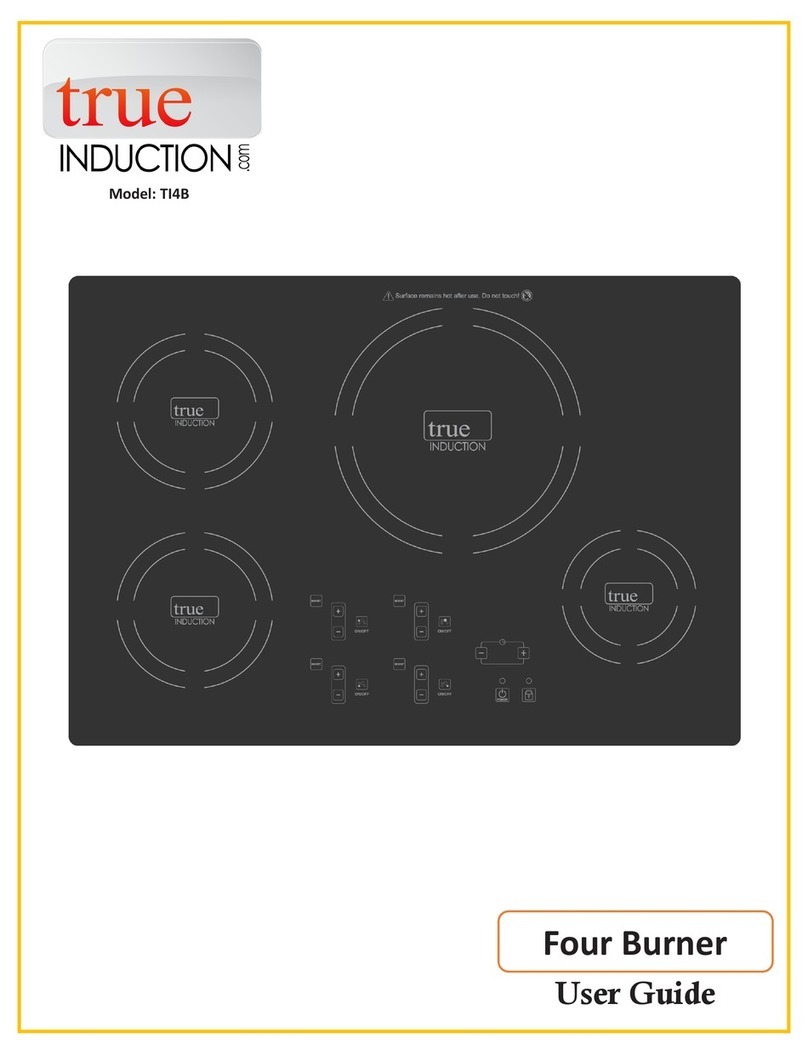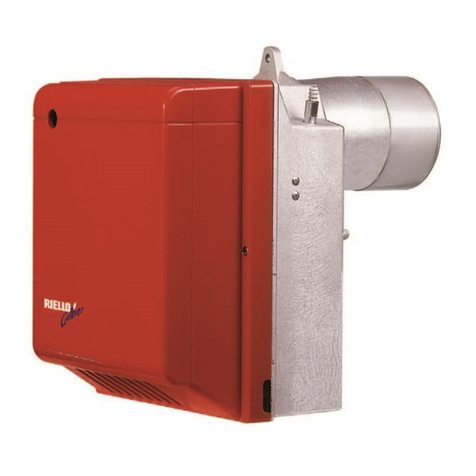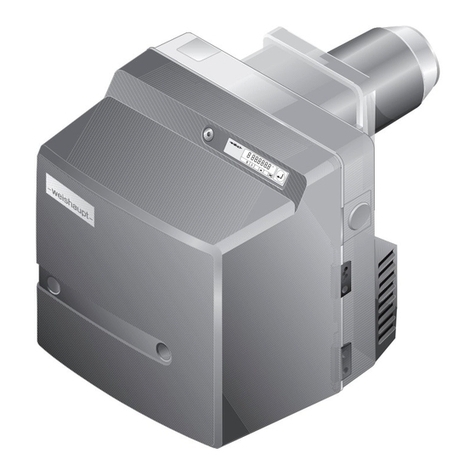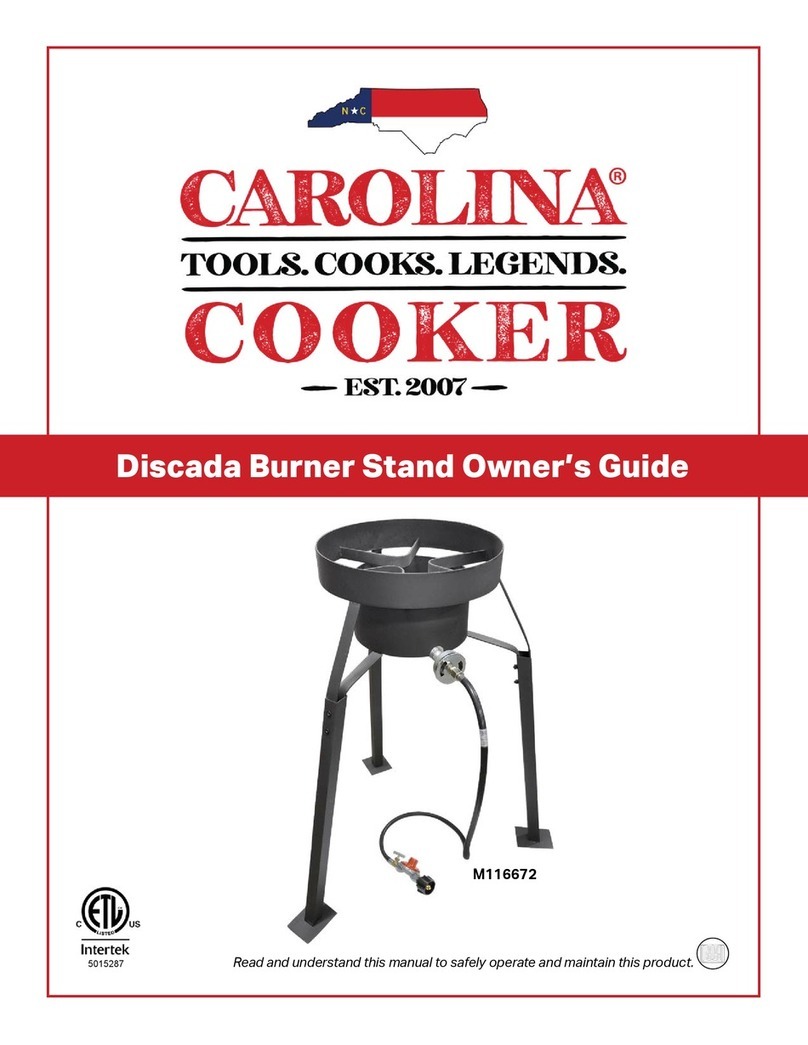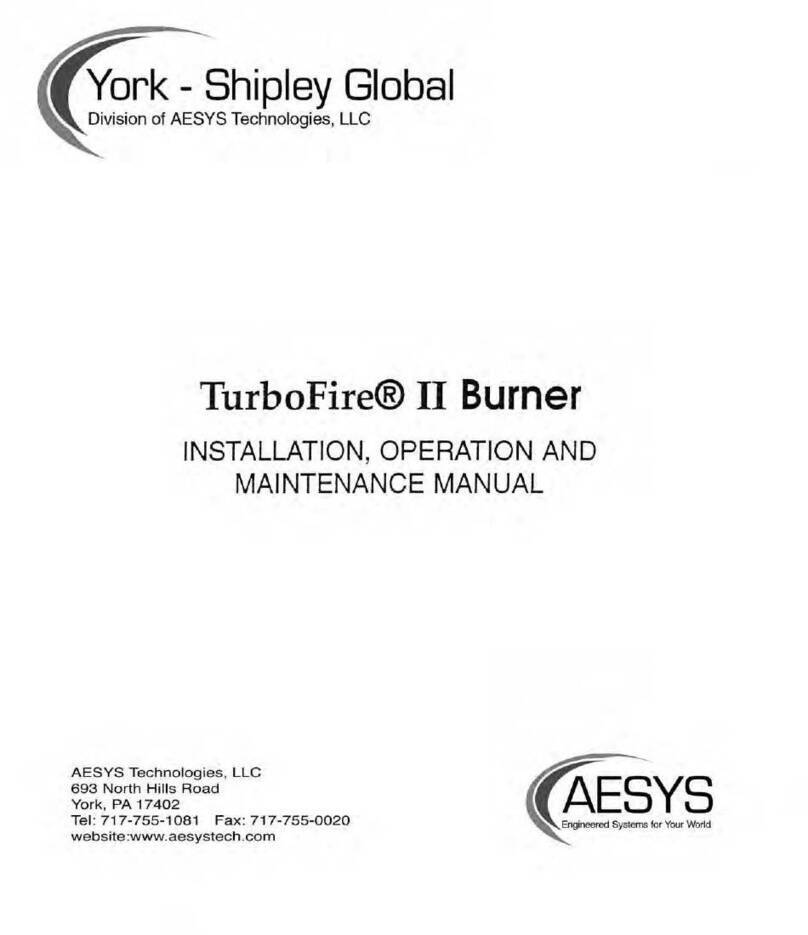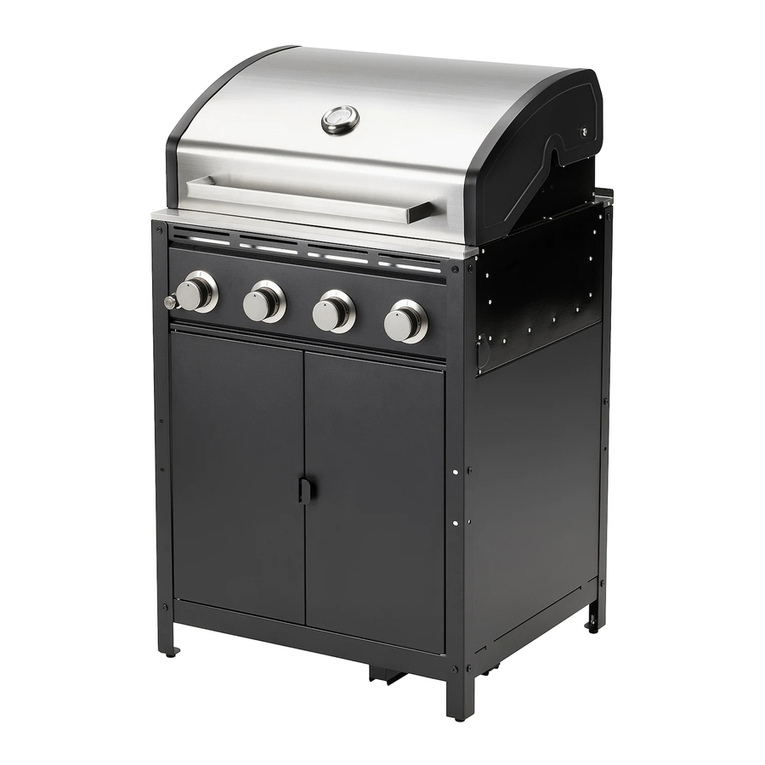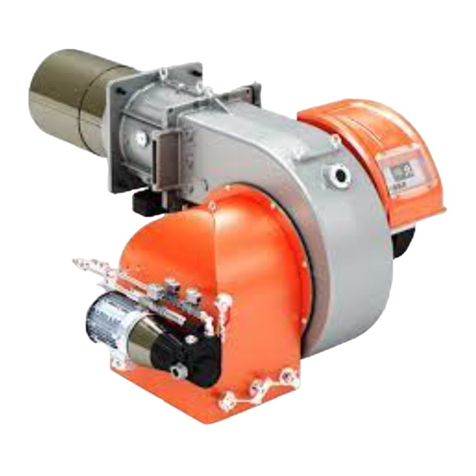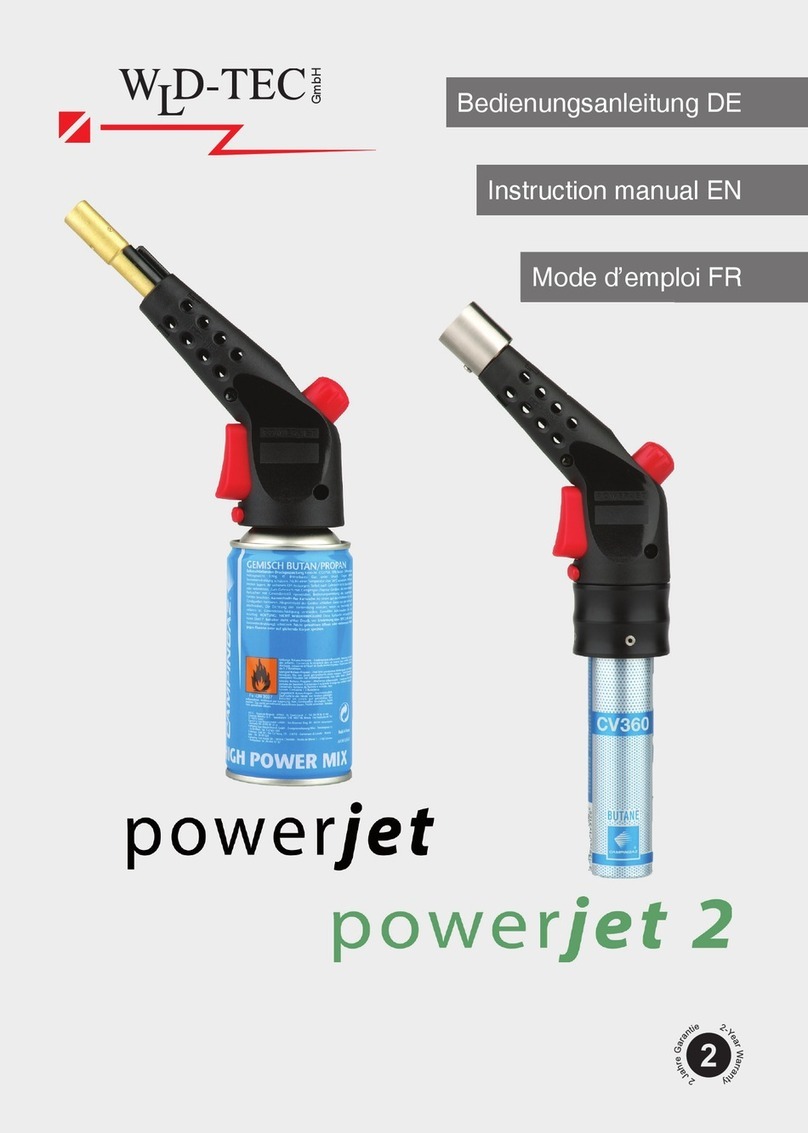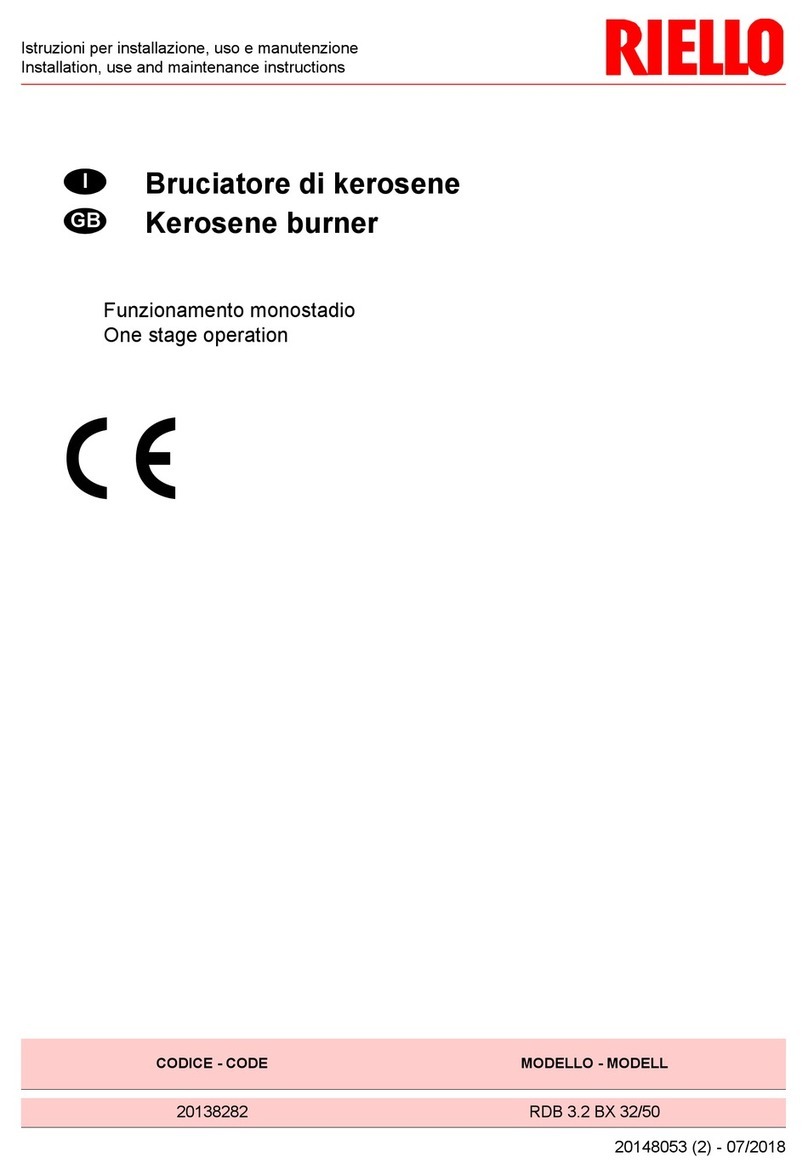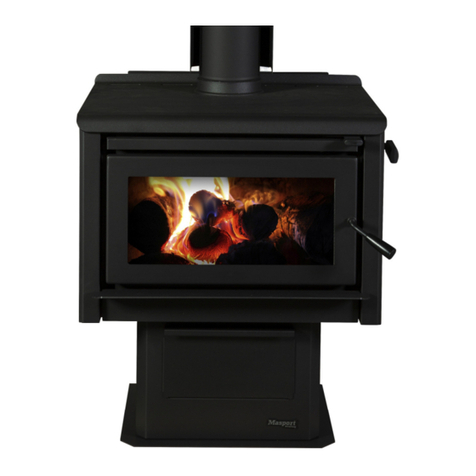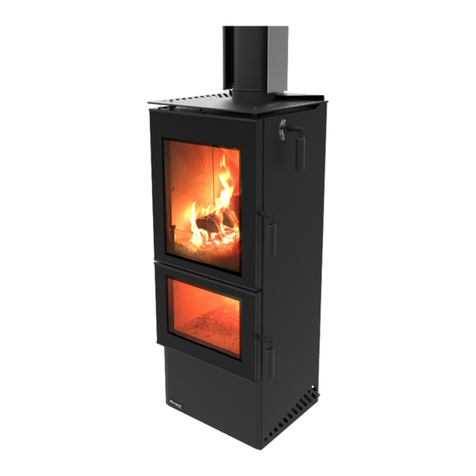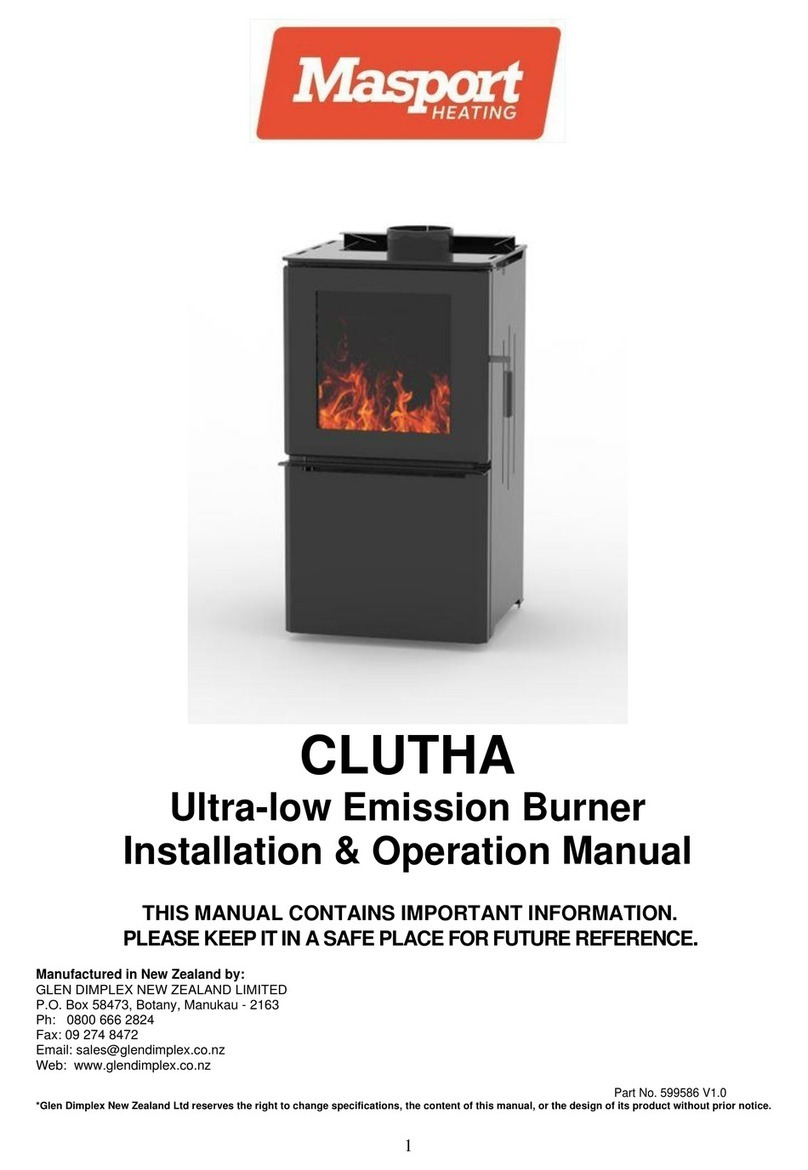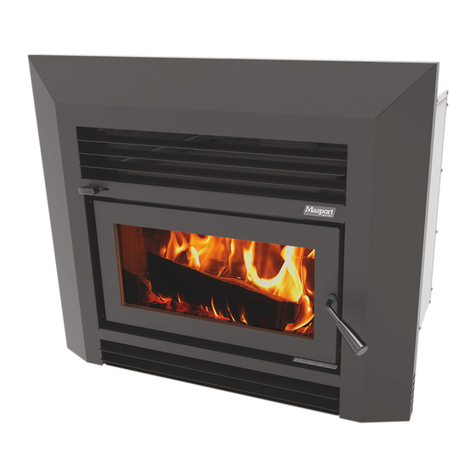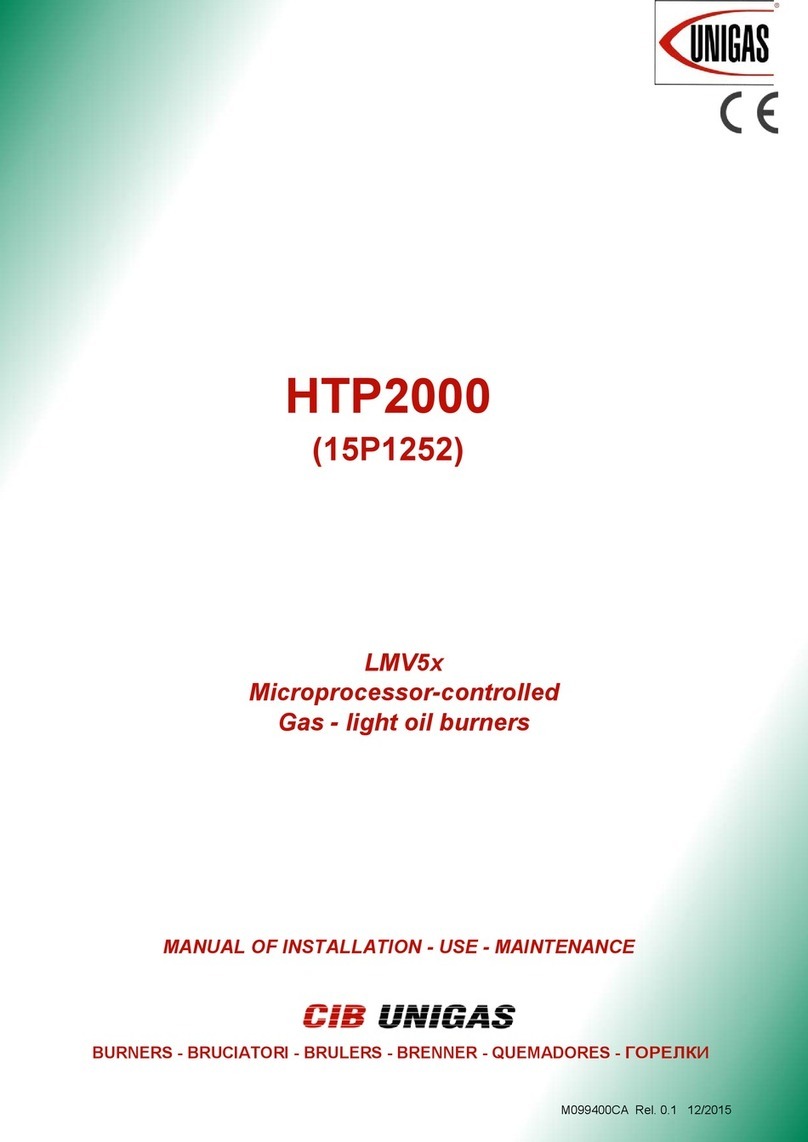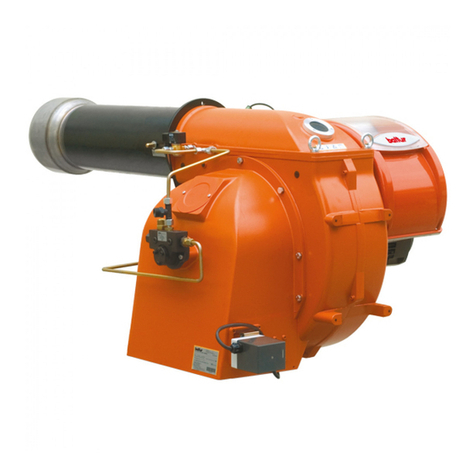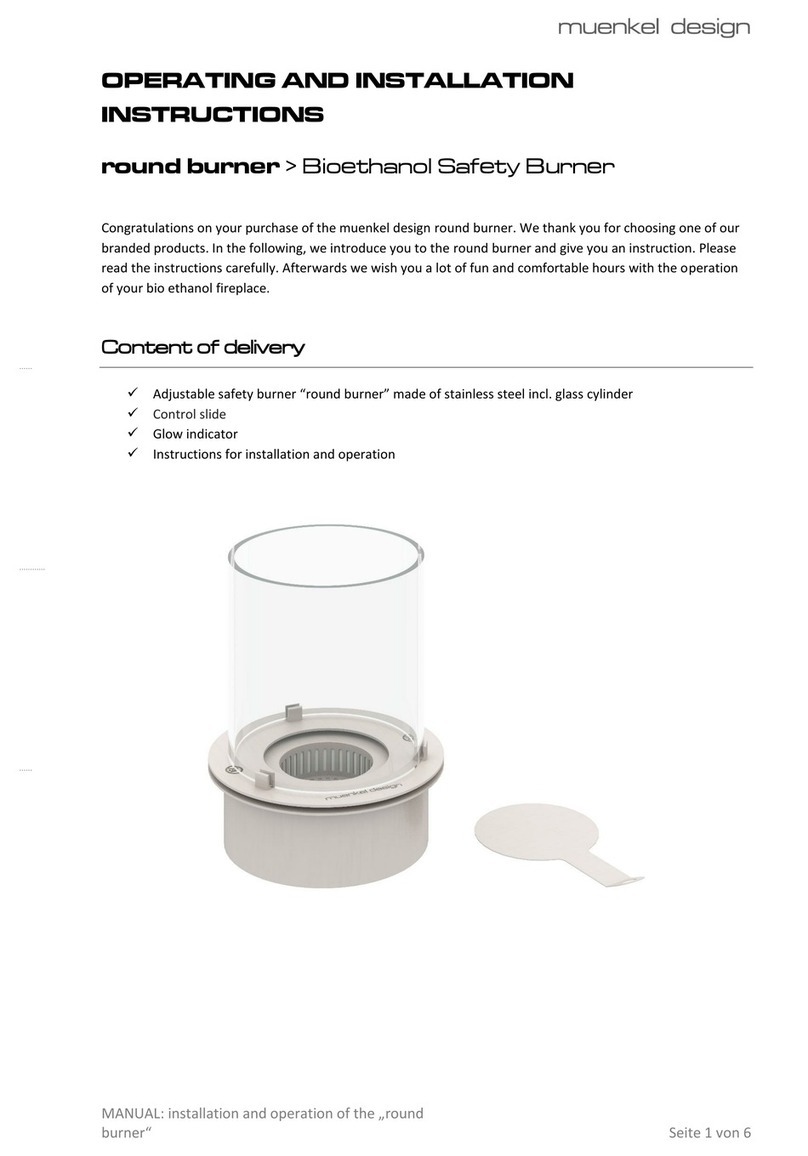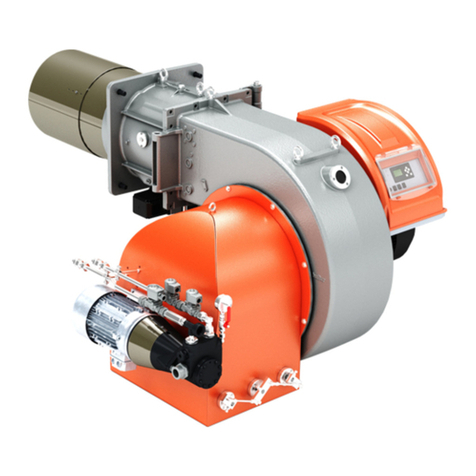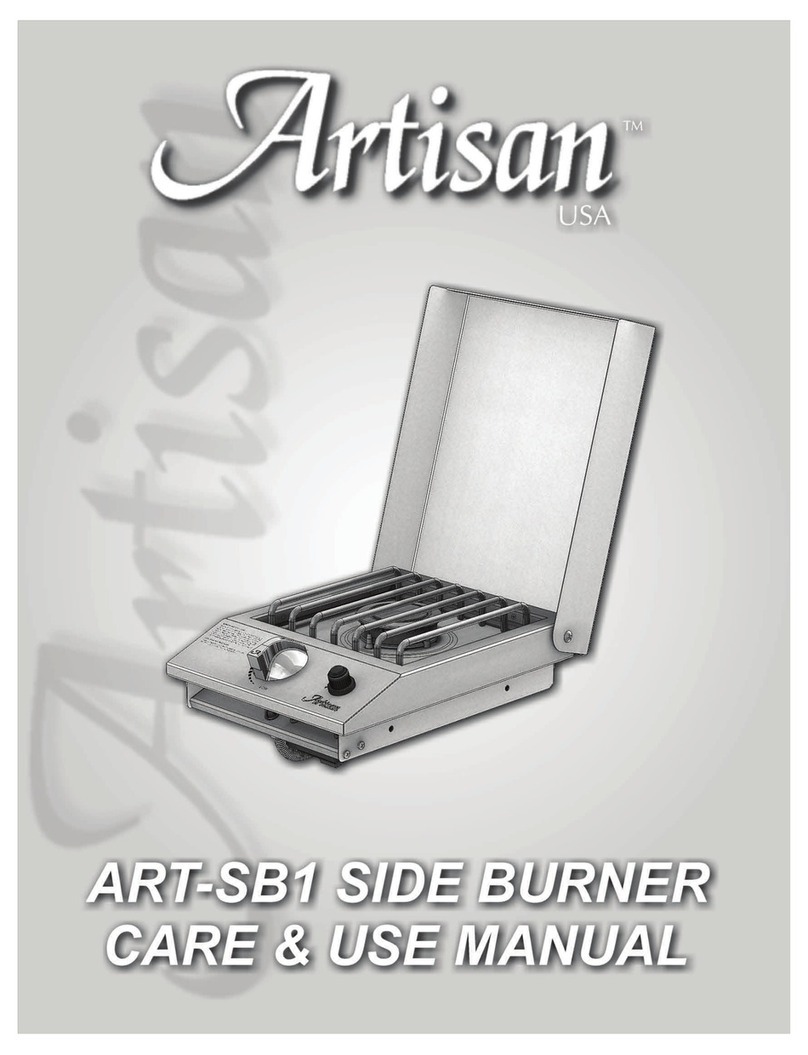
4
1.3 Warnings
The installation of the Hurunui ULEB requires building consent before installation commences.
Check with your local Building Authority whether there are any additional requirements before
installing.
The Hurunui burner and flue system shall be installed in accordance with AS/NZS 2918:2001
and appropriate requirements of the relevant local building codes.
Glen Dimplex highly recommends NZHHA trained SFAIT (Solid Fuel Appliance Installation
technician) installer to install Hurunui burner. Your dealer or heating specialist will be able to
help with recommendations and advice on permits/consents required for the installation in your
area.
Please read carefully all the dimensions and recommendations provided in the technical
specification section of this manual. The dimensions given comply with the required safety
standard AS/NZS 2918:2001.
The safety and emissions performance of Hurunui can be affected by altering the appliance; hence no
modifications are allowed.
Please ensure that only components approved by Glen Dimplex New Zealand are used for the
installation, as substitutes may adversely affect performance and might nullify compliance with the
requirements of AS/NZS 2918 safety standards.
The Hurunui ULEB should be installed with a Masport flue system or a flue system that has been
tested and comply with AS/NZS 918:2001 Appendix F.
The Hurunui ULEB and flue system must be serviced at least once a year by a service agent
trained and authorized by Glen Dimplex, New Zealand.
1.4 Caution
This appliance is not intended for use by persons (including children) with reduced physical,
sensory, or mental capabilities or lack of experience and knowledge unless they have been
given supervision or instruction concerning the use of the appliance by a person responsible
for their safety.
Do not leave children unattended near the alighted fire and keep them well away from the
fire when in use. Supervise young children to ensure that they do not play with the appliance.
Do not use flammable liquids or aerosols to start or rekindle the fire. Also, do not use such
flammable materials near this appliance when operating.
Always keep clothing, firewood, furnishing, and other combustible materials at a safe
distance from the fire.
Do not touch any part of the fire other than the door and the damper handle when in use, as
all other parts can be extremely hot.
Cracked/broken door glass makes the installation unsafe. Do not operate the fire with
cracked glass.
Do not attempt to clean or maintain the fire when in use or with hot embers in the
combustion chamber. Ensure that embers and all other parts of the fire have cooled down
completely before starting ash removal or other maintenance.
Do not use the fire if there is a malfunction, a suspicion of breakage, or unusual noises.
Contact your nearest Masport dealer or customer service team at Glen Dimplex, New
Zealand.
This appliance should always be operated & maintained as per instructions in this manual.
Failure to follow above warnings, cautionary measures
and instruction given in this installation and operation
manual will void the Masport warranty of this product.


